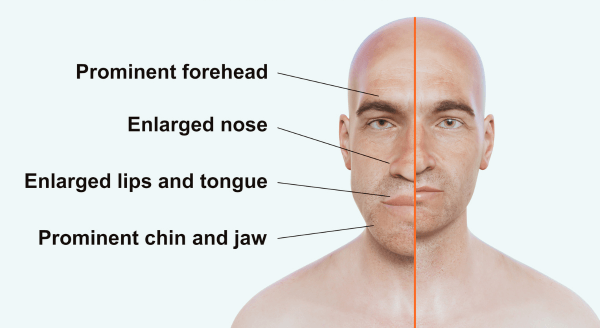Nursing Paper Example on Anemia of Chronic Disease
Nursing Paper Example on Anemia of Chronic Disease
Anemia of chronic disease, also known as anemia of inflammation, is a common form of anemia that occurs in response to chronic illnesses, infections, or inflammatory conditions. Unlike other forms of anemia caused by deficiencies or blood loss, this type of anemia results from a complex interplay of inflammatory cytokines, iron metabolism dysregulation, and impaired erythropoiesis. It is often associated with conditions such as rheumatoid arthritis, chronic kidney disease, and cancer.

Causes of Anemia of Chronic Disease
Anemia of chronic disease occurs due to chronic medical conditions that trigger an inflammatory response. The key contributing factors include:
Chronic infections: Prolonged infections like tuberculosis or HIV/AIDS lead to persistent inflammation, reducing red blood cell production.
Autoimmune diseases: Disorders like rheumatoid arthritis, lupus, and inflammatory bowel disease increase inflammatory cytokine activity, suppressing hematopoiesis.
Chronic kidney disease: Impaired kidney function reduces erythropoietin production, leading to decreased red blood cell synthesis.
Cancer: Malignancies often cause systemic inflammation, impacting the bone marrow’s ability to produce adequate red blood cells.
Other chronic conditions: Conditions such as diabetes and chronic heart failure are linked to ongoing low-grade inflammation, contributing to anemia.
(Nursing Paper Example on Anemia of Chronic Disease)
Signs and Symptoms
The symptoms of anemia of chronic disease are often subtle and overlap with those of the underlying chronic condition. Common symptoms include:
Fatigue: A consistent feeling of tiredness due to reduced oxygen delivery to tissues.
Pallor: Pale skin and mucous membranes caused by decreased hemoglobin levels.
Dyspnea: Shortness of breath during physical activity as a result of inadequate oxygenation.
Weakness: Generalized muscular weakness due to diminished energy production.
Symptoms of the underlying condition: These may include joint pain in autoimmune diseases, fever in chronic infections, or weight loss in malignancies.
Patients may present with mild to moderate anemia and a hemoglobin level typically between 8-11 g/dL, which contrasts with the severe anemia seen in other forms such as iron-deficiency anemia.
Etiology
The primary mechanism of anemia of chronic disease involves the immune system’s response to prolonged inflammation. Key etiological factors include:
Inflammatory cytokines: Cytokines such as interleukin-6 (IL-6) and tumor necrosis factor-alpha (TNF-α) play a central role. They inhibit erythropoietin production and impair the bone marrow’s response to erythropoietin.
Iron metabolism dysregulation: The liver produces hepcidin, a regulatory hormone that reduces iron absorption in the gut and traps iron within macrophages. This results in functional iron deficiency.
Reduced erythropoiesis: Chronic diseases suppress erythropoietin secretion, limiting red blood cell production in the bone marrow.
Shortened red blood cell lifespan: Inflammatory mediators lead to hemolysis and a reduction in red blood cell survival.
Pathophysiology
The pathophysiology of anemia of chronic disease is multifactorial and revolves around inflammation-induced changes in iron metabolism and erythropoiesis.
Hepcidin upregulation: In response to IL-6, the liver increases hepcidin production. Hepcidin inhibits ferroportin, the protein responsible for exporting iron from macrophages and enterocytes. This traps iron in storage sites and reduces serum iron levels, limiting its availability for hemoglobin synthesis.
Cytokine-mediated suppression of erythropoiesis: Pro-inflammatory cytokines suppress erythropoietin production in the kidneys and reduce erythroid precursor activity in the bone marrow. This leads to inadequate red blood cell production despite normal or high iron stores.
Red blood cell destruction: Chronic inflammation also accelerates red blood cell destruction by promoting macrophage activity, further contributing to anemia.
This condition typically results in normocytic or microcytic anemia, with low serum iron and transferrin levels but normal or elevated ferritin levels, reflecting adequate iron stores.
(Nursing Paper Example on Anemia of Chronic Disease)
DSM-5 Diagnosis
Anemia of chronic disease is a physiological condition and is not classified as a psychiatric or behavioral disorder under the DSM-5. However, its symptoms, particularly fatigue, can mimic or exacerbate symptoms of depression or other psychological disorders, especially in chronic disease patients. A thorough assessment is required to differentiate anemia-related fatigue from mental health concerns.
Diagnosis
Diagnosing anemia of chronic disease involves a combination of clinical evaluation, laboratory tests, and ruling out other causes of anemia.
Blood tests:
Hemoglobin: Mild to moderate reduction in hemoglobin levels (8-11 g/dL).
Serum iron: Decreased due to hepcidin-induced iron sequestration.
Ferritin: Elevated or normal, indicating sufficient iron stores.
Transferrin saturation: Low due to reduced iron availability for erythropoiesis.
Markers of inflammation: Elevated levels of C-reactive protein (CRP) and erythrocyte sedimentation rate (ESR) suggest ongoing inflammation.
Bone marrow biopsy: Rarely needed but may confirm iron sequestration in macrophages.
Exclusion of other causes: Ruling out iron-deficiency anemia, thalassemia, or vitamin B12/folate deficiency through additional tests is crucial.
Treatment Regimens
The management of anemia of chronic disease focuses on addressing the underlying condition, improving anemia-related symptoms, and enhancing quality of life.
Treatment of the underlying disease: Controlling the chronic condition, such as using disease-modifying antirheumatic drugs (DMARDs) for autoimmune diseases or antiretroviral therapy for HIV, can reduce inflammation and improve anemia.
Iron therapy: Iron supplementation is usually ineffective because of iron sequestration by hepcidin. Intravenous iron therapy may be considered in select cases with significant functional iron deficiency.
Erythropoiesis-stimulating agents (ESAs): Synthetic erythropoietin, such as epoetin alfa or darbepoetin alfa, can stimulate red blood cell production in patients with chronic kidney disease or cancer.
Anti-hepcidin therapies: Experimental treatments targeting hepcidin regulation are being explored to improve iron availability.
Blood transfusion: Reserved for severe cases or patients with symptomatic anemia who do not respond to other treatments.
Patient Education
Patient education plays a critical role in the management of anemia of chronic disease. Key areas include:
Understanding the condition: Patients should be informed about the link between chronic disease and anemia, emphasizing the importance of managing the underlying condition.
Dietary guidance: While dietary iron supplementation is often ineffective, maintaining a balanced diet to support overall health is essential.
Treatment adherence: Patients must understand the need to adhere to prescribed treatments for both the anemia and the underlying condition.
Monitoring and follow-up: Regular blood tests and clinical evaluations are necessary to monitor anemia progression and treatment response.
Conclusion
Anemia of chronic disease is a complex condition resulting from chronic inflammation and iron metabolism dysregulation. It often accompanies various chronic illnesses and significantly impacts patients’ quality of life. Early diagnosis, targeted treatment of the underlying disease, and supportive therapies are essential to manage this condition effectively. Advances in understanding its pathophysiology have paved the way for novel therapeutic approaches, offering hope for improved outcomes in the future.
References
Weiss, G., & Ganz, T. (2019). Anemia of inflammation. Blood, 133(1), 40-50. https://doi.org/10.1182/blood-2018-06-856500
Nemeth, E., & Rivera, S. (2021). Role of hepcidin in anemia of chronic disease. Journal of Clinical Investigation, 131(3), e142160. https://doi.org/10.1172/JCI142160
Camaschella, C. (2020). Iron-deficiency anemia and anemia of chronic disease. Hematology/Oncology Clinics of North America, 34(4), 593-606. https://doi.org/10.1016/j.hoc.2020.05.002











